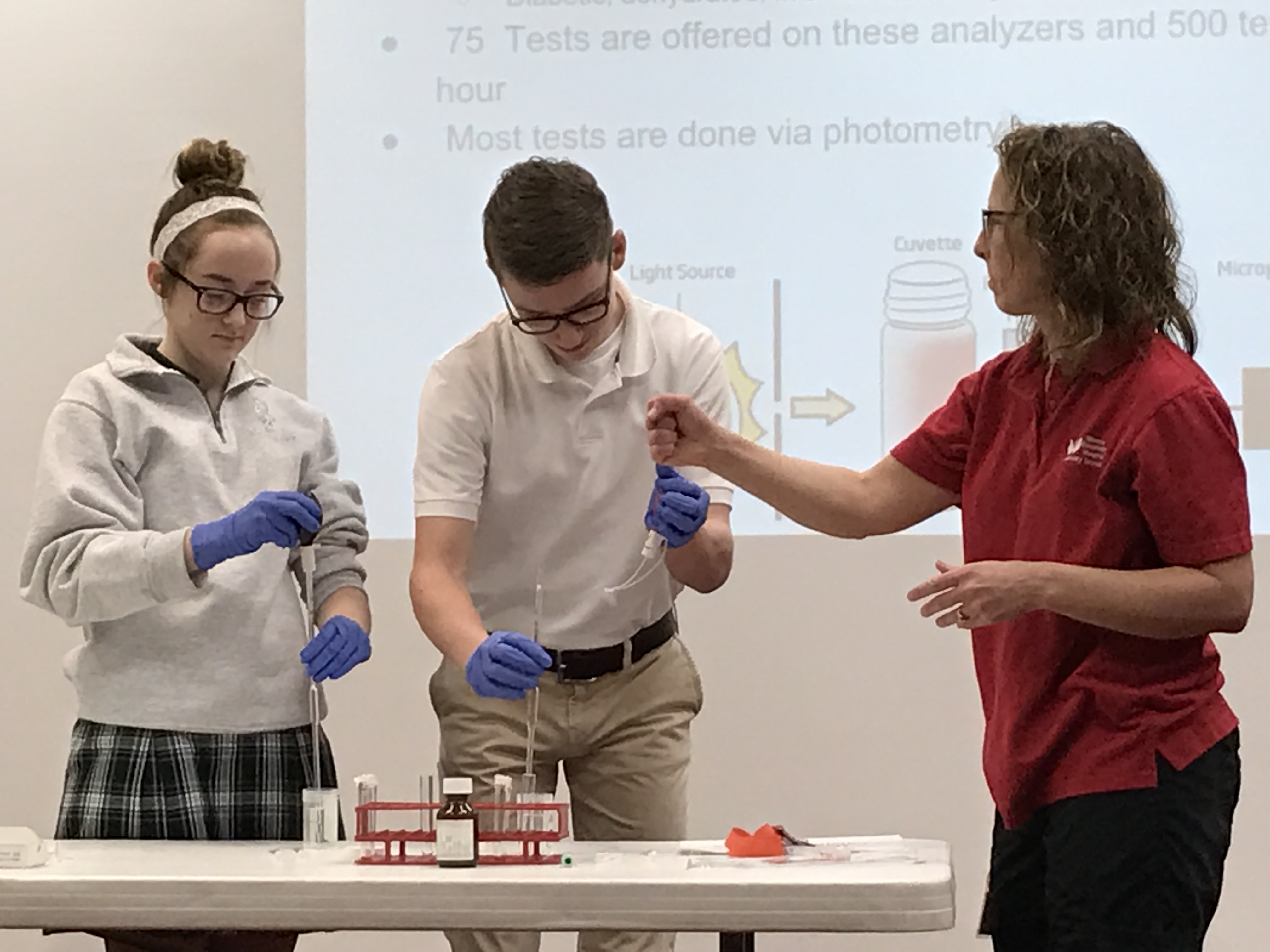Stark County Assistant Prosecutor Fred Scott Illuminates a Prosecutor's Many Hats
By: Alyssa Mattis
When I heard a prosecutor was coming to speak to our seventh and eighth graders, I became a little nervous. Prosecutors tend to have a reputation to be mean and serious. Fred Scott, assistant prosecutor for Stark County and St. Michael School alumnus, was far from scary. He walked in equipped with a neon green Christmas tie and a bright smile stretching across his friendly face. He explained that prosecutors are the lawyers who present the evidence of a crime to the grand jury, trial jury and judge. It is his job to review all the information from the crime in order to bring justice to the community. As he presents all the information, the opposing attorney defends the person being prosecuted. Scott has been an assistant prosecutor for 25 years, and said what he is most proud of is never sending anyone to prison who turned out to be innocent. Scott made it clear that a prosecutor isn't just a mean lawyer who sends criminals to prison for life. While a prosecutor's main responsibility is to protect a community from dangerous criminals, a prosecutor also helps the people he or she prosecutes. For example, when kids and teens get in serious trouble, prosecutors don’t want to lock them up for life. He assured us that the juvenile justice system isn’t designed to punish kids; it is actually used help kids and teens find the right path to live a happy and successful life.
Even though Scott touched on the juvenile court system in response to student questions, he works only with adult felons. His responsibilities include assisting drug addicts with straightening out their lives. Instead of sending drug addicts to prison, he often recommends community supervision and rehab to help get their lives back on track. He explained that overcoming a drug addiction is extremely difficult, and everyone deserves a second chance. At rehab, they learn to control their addiction. He continued to explain recovering from an addiction is difficult, but it is can be just as tough to find a job with a criminal record, which is why the Stark County Court of Common Pleas implemented the CHANCE program to give non-violent felony offenders with substance abuse problems the opportunity to expunge the charge(s) from their record that would otherwise inhibit them from being hired. The CHANCE program is a minimum 12-month intensive treatment program with three phases. Overall, I learned that prosecutors aren’t just another type of scary lawyer. They are extremely beneficial to our safety. A prosecutor is definitely a cool and interesting occupation to consider.

taken by Gino Ross

